For many years now, the art world has had a (love) relationship with cars, be it as a way of representing speed or critical reflection on consumerism. We cast a glance at ten works that impressively attest to this fascination. Starting with Leonardo da Vinci and ending with SELMA SELMAN.
1. Previewing technological innovation: Leonardo da Vinci, “Codex Atlanticus” (1503–4)
In his “Codex Atlanticus”, Leonardo da Vinci presents one of his remarkable sketches: an early concept for an automobile. Although the draft was never realized during his lifetime and was possibly intended as a stage prop, the concept impressively shows da Vinci’s unflagging zest for invention and his constant search for technological innovations that extended well beyond his own day.
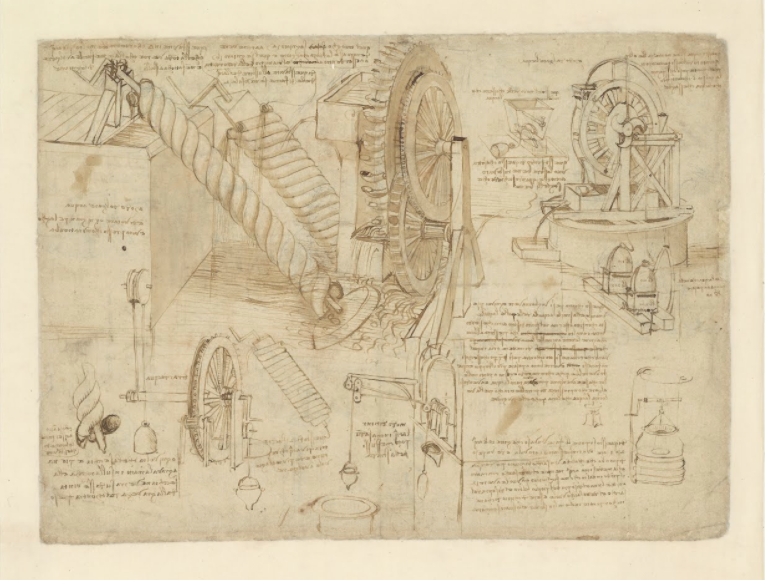
Leonardo da Vinci, Codex Atlanticus, 1503/04, Image via openculture.com
2. An auto-artwork: Janis Joplin’s “Psychedelic Porsche” (1965)
In one of her greatest hits, Janis Joplin said of her wish for a Mercedes: “Oh Lord, won’t you buy me a Mercedes Benz, my friends all drive Porsche”. She had, in fact, long since had her own Porsche – and it was often far more than “just” a car. Her “Psychedelic Porsche” is a rolling artwork painted with the typical psychedelic patterns and symbols of the 1960s. It thus embodies the spirit of freedom and counter-culture and demonstrates impressively how an auto can become a canvas. When Joplin acquired the Porsche in 1968 it came with a plain white paintjob. Her friend and roadie Dave Richards transformed it into a colorful artwork. After her untimely death, her siblings inherited it, later had it restored, and eventually sold it at auction for $ 1.76 million.

Janis Joplin, Psychedelic Porsche, 1965, Image via pinterest.de
3. Highs and lows: Andy Warhol, “Car Crash” series (1960s) and “Cars” (1986)
In his 1986 “Cars” series, Warhol gave eternal life to some of history’s iconic autos. The silkscreens of Mercedes models not only celebrate the beauty of the machines, but also their role as status symbols in consumer society.
This contrasts sharply with his “Car Crash” series of the 1960s that address the thin line between personal tragedy and the mass media. In this series, Warhol took photos from the gutter press and police archives in order to capture the horror of genuine crashes and thus underscored his fascination with the commercialization of intimate, unsettling events in a media-suffused society.

Andy Warhol, Cars, created in 1986 for the Daimler "Cars" series: Andy Warhol, Mercedes C111 (1970) Photo: Daimler, image via stuttgarter-nachrichten.de

Andy Warhol, Car Crash, ca. 1978, image via mutualart.com
4. Divine fusion: Thomas Bayrle, “Madonna Mercedes” (1989)
In Thomas Bayrle’s piece “Madonna Mercedes”, the traditional figure of the Madonna melds with the photographic representation of a car. In this collage, Bayrle combines elements of orthodox iconography with Pop culture symbols. This unconventional linkage of religion and consumer society emphasizes the artistic contrast between spiritual iconography and modern mass production by fusing them into a single, uniform image.
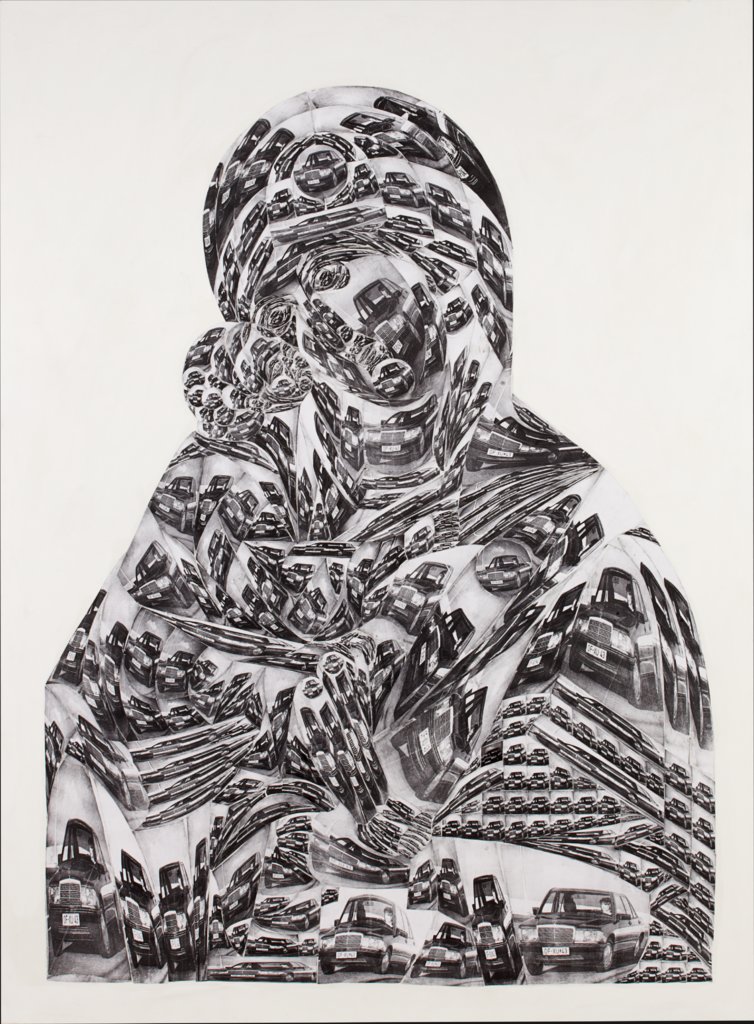
Thomas Bayrle, Madonna Mercedes, 1989, image via sammlung.staedelmuseum.de
5. Radically transformed: Gabriel Orozco, “La DS” (1993)
With “La DS”, Gabriel Orozco examines traditional notions of the design and functionality of the iconic Citroën DS: He sawed the car into three parts, removed the central section, and reassembled the remaining parts. The steering wheel is now exactly in the middle, and the remaining space can seat only one person. This drastic redesign is a playful and yet profound commentary on the perfection and symmetry of automobile aesthetics. Orozco’s technical manipulation transforms “La DS” not only physically but also metaphorically into a symbol of exaggerated speed, streamlining, and elegance.
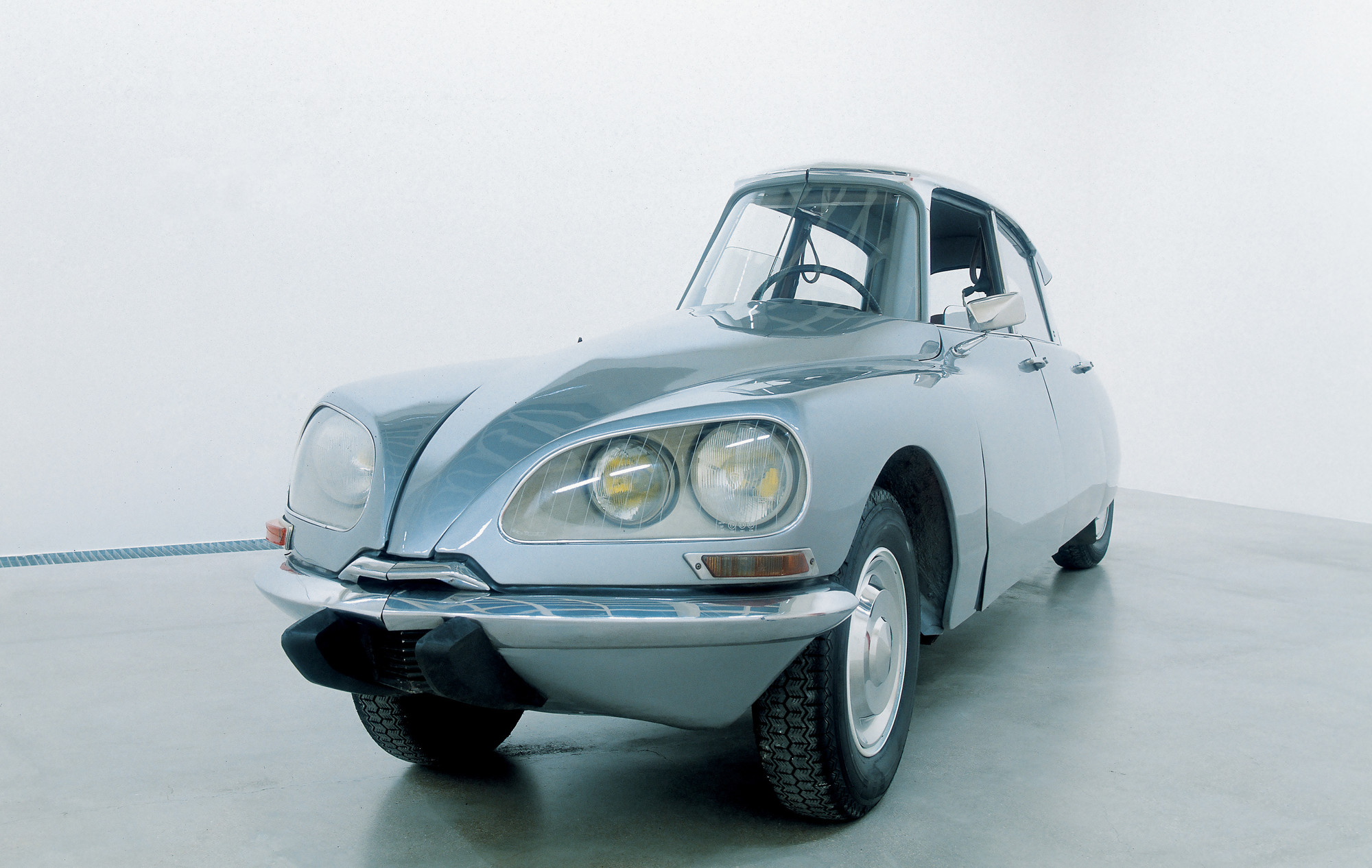
Gabriel Orozco, La DS, 1993, image via moma.org

Erwin Wurm, Fat Car, 2001, image via pinterest.de
6. When cars become balloons: Erwin Wurm, “Fat Car” (2001)
Erwin Wurm’s “Fat Car” turns our perception of cars upside down. The outsized autos seem to have popped straight out of a surreal dream with their large, round shapes somehow reminiscent of balloons. With these exaggerated proportions, Wurm not only parodies our love of cars, but also criticizes our value system: He turns the once slender, cutting-edge auto into a plump and ponderous thing that certainly does not match today’s ideals. With “Fat Car”, Wurm not only tackles our take on mobility and consumerism, but also the noughties’ craving to be slender and thus beautiful.
7. What do a Trabant and a Chevrolet share? Liz Cohen, “Trabantimino” (2002–2010)
Liz Cohen explores the shared qualities of a Trabant and a Chevrolet artistically, melding the two cars to form a single artwork – and the “Trabantimino” was born. The kinetic sculpture is the outcome of eight years spent working on the chassis and a remarkable trip from former East Germany to Oakland, Scottsdale, and Detroit – and it combines the Trabant’s modesty with the grandeur of a Chevrolet El Camino. Cohen, originally a photographer, proves here that she’s a skilled mechanic and that, in her “Trabantimino”, art and car-building can fuse quite uniquely so as to bridge cultural and historical opposites.
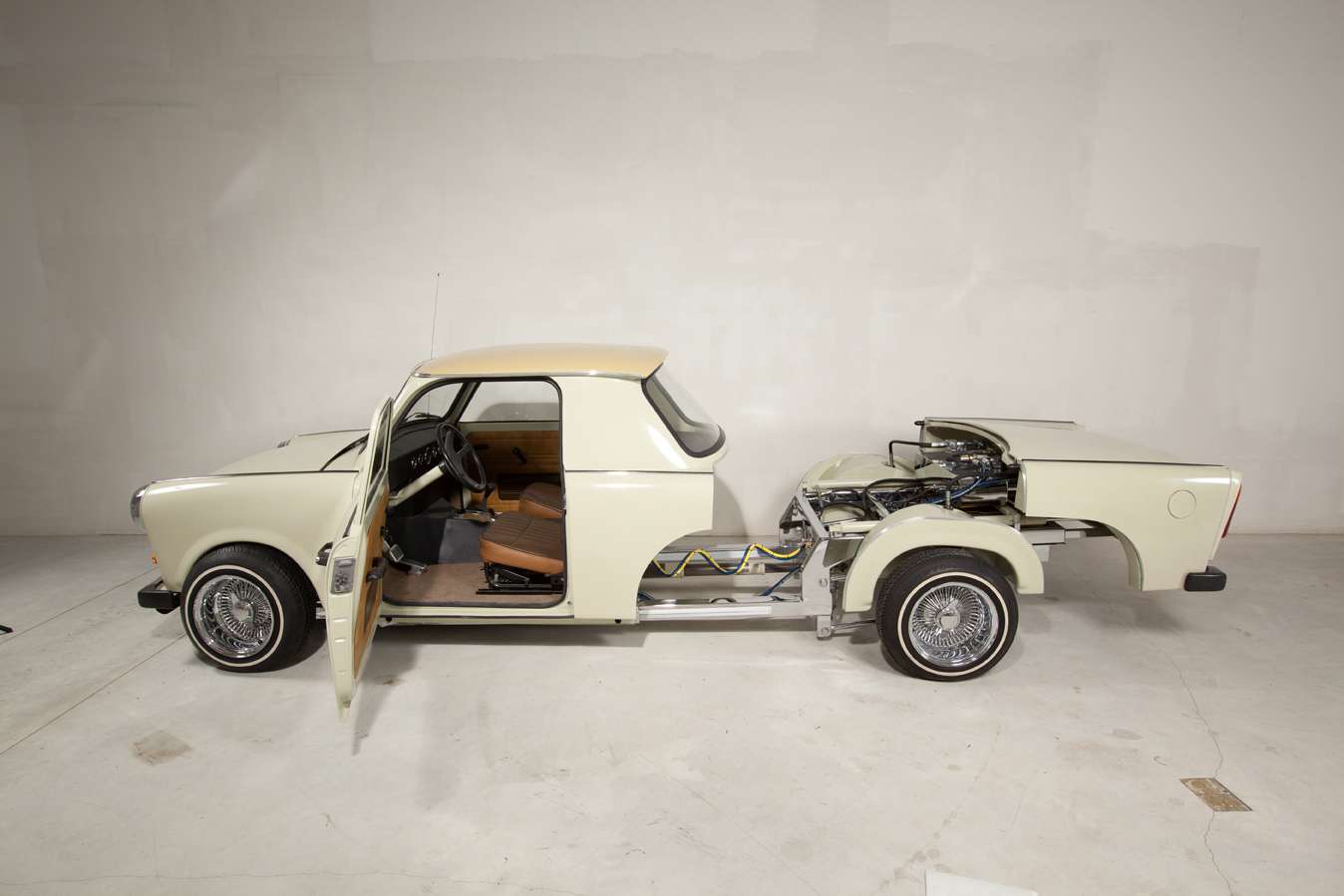
Liz Cohen, Trabantimino, 2002-2010, image via salon94.com
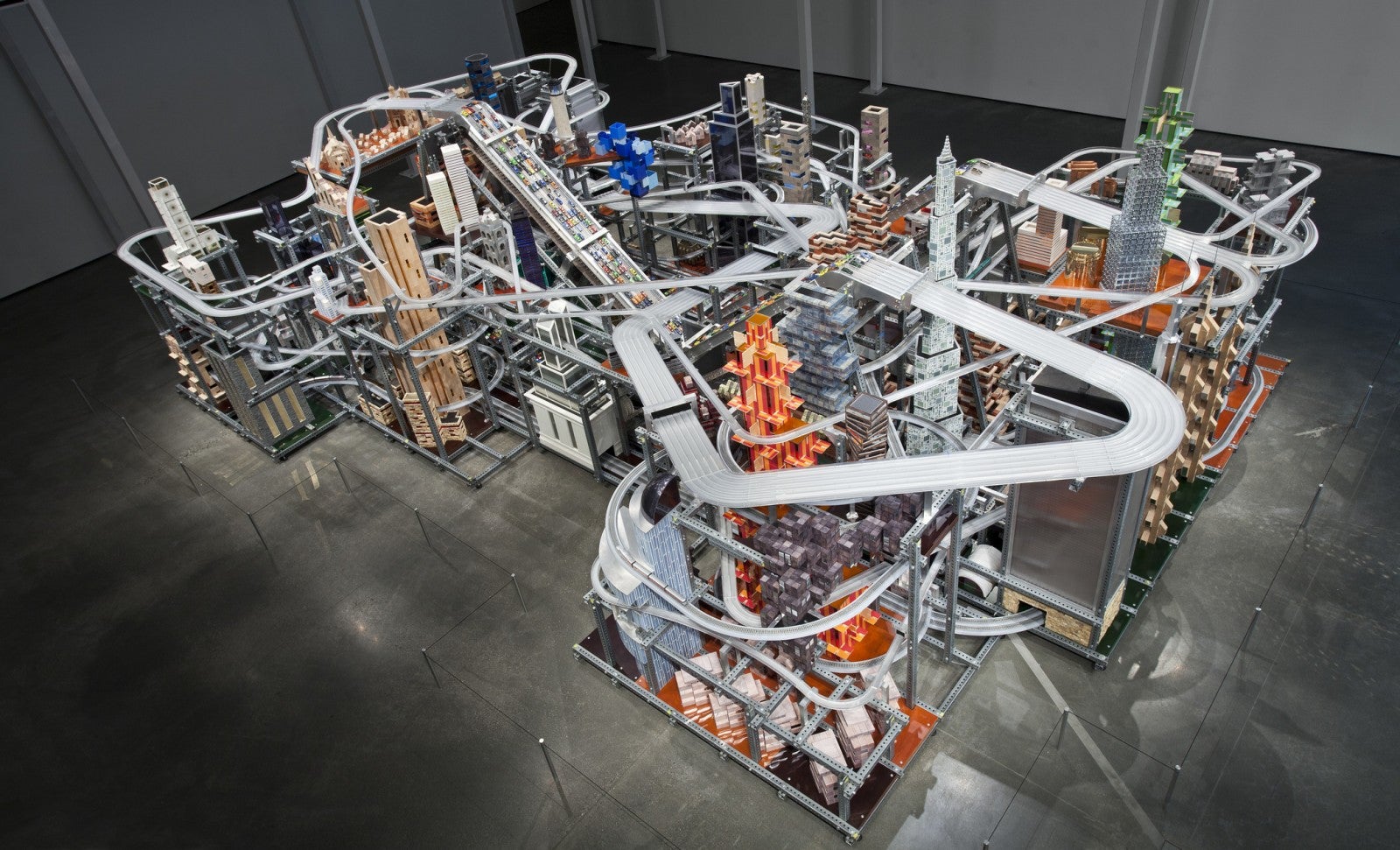
Chris Burden, Metropolis II, 2011, image via lacma.com
8. Pure adrenalin: Chris Burden, “Metropolis II” (2011)
“Metropolis II” resembles a futurist fairytale world for car enthusiasts. The gigantic kinetic sculpture sends miniature autos zipping through a labyrinth of streets and tracks at up to 240 mph. With 18 streets and a six-lane highway, everything here spells action and speed. Burden perfectly captures the hectic energy of a modern city – with a constant stream of toy trains and cars barreling along, reflecting the dynamic beat of the 21st-century urban world.
9. Metaphors of mobility: Asta Gröting, “The travelling carriage of Goethe, the Mercedes of Adenauer and my Smart” (2012)
Asta Gröting’s installation “The travelling carriage of Goethe, the Mercedes of Adenauer and my Smart” presents the underbodies of three cars in direct comparison: Goethe’s traveling carriage, Adenauer’s Mercedes and Gröting’s own Smart. The life-size casts bring to mind stranded animals stuck on their backs. In this way, Gröting visualizes the development of German (automotive) history from Goethe’s romantic travels via the magnificence of Adenauer’s state Mercedes to the practical city runabout that is the Smart.
The polyurethane casts convey how technological progress impacts the appearance and significance of our vehicles, and essentially our lives, too.
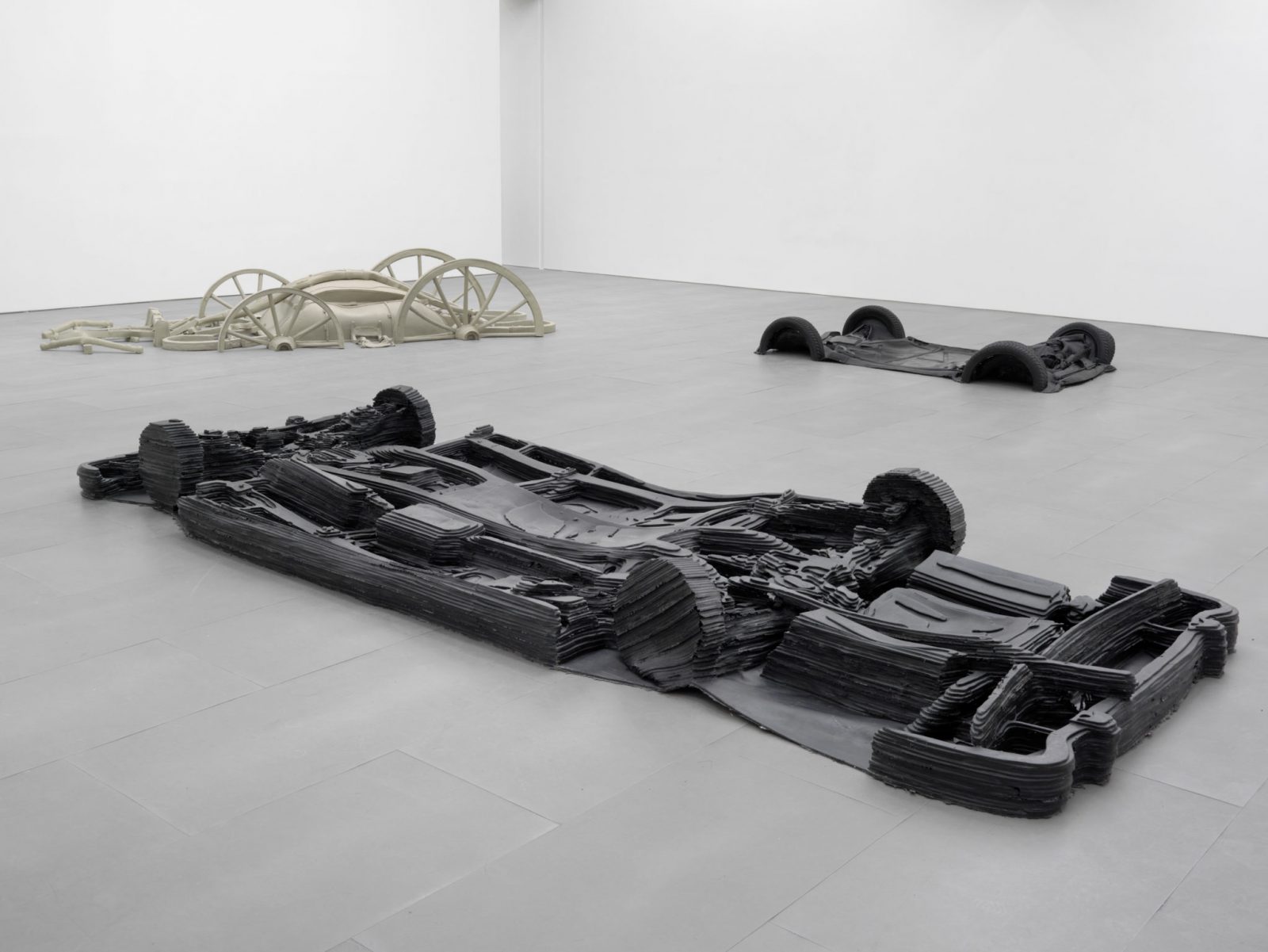
Asta Gröting, The travelling carriage of Goethe, the Mercedes of Adenauer and my smart, 2021, image via astagroeting.de
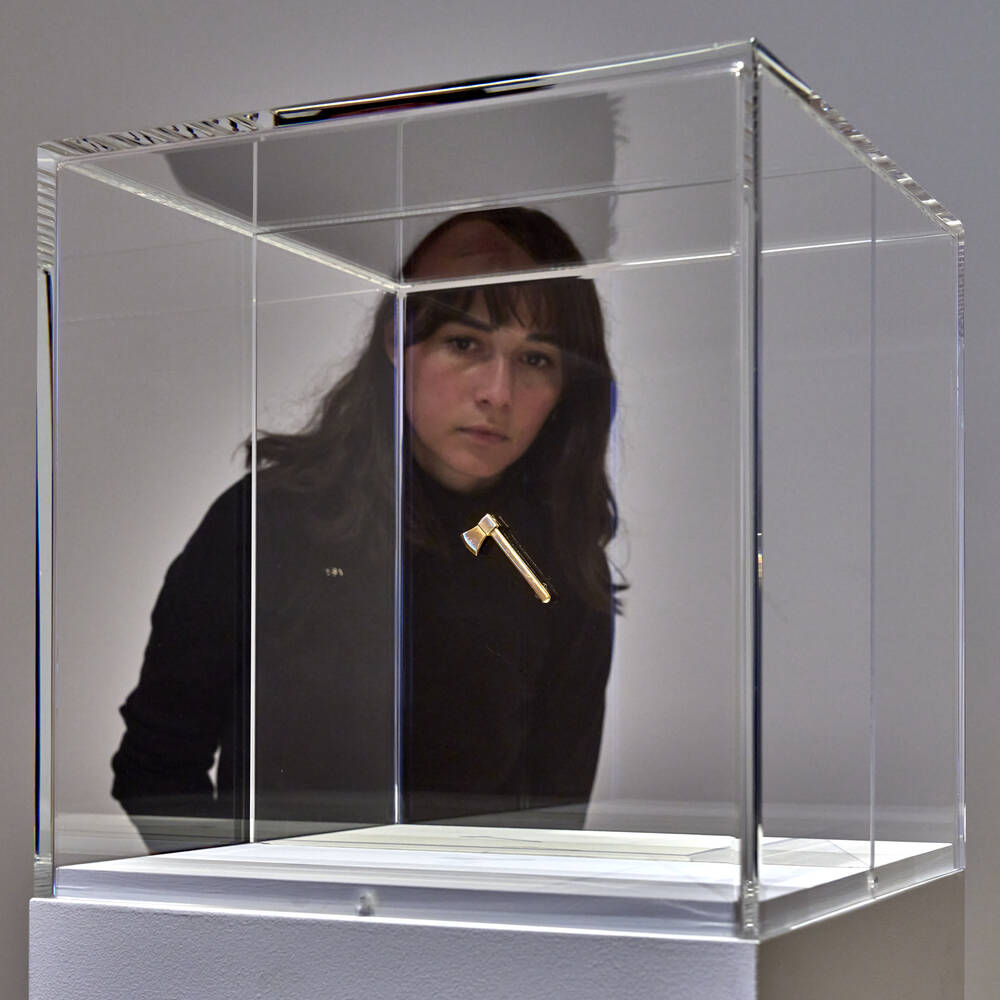
10. Once an auto, now an ax: Selma Selman, “Platinum (Axe)” (2021)
Made from 33 grams of platinum obtained from the discarded catalytic converters of scrapped cars, this piece embodies the sheer genius of artist Selma Selman. Together with male members of her family and community, Selman introduces car wrecks into the exhibition space by using axes and grinders to extract precious metals such as platinum, palladium, and rhodium from them. In a painstaking process, she then isolates the platinum from the materials collected. The result? A silver gleaming axe that is now presented as an exhibit behind glass. For Selman, this ax is a tool in her artistic practice and in the family trade with scrap metals – as well as in her artistic oeuvre, challenging our perceptions of value and sustainability.









